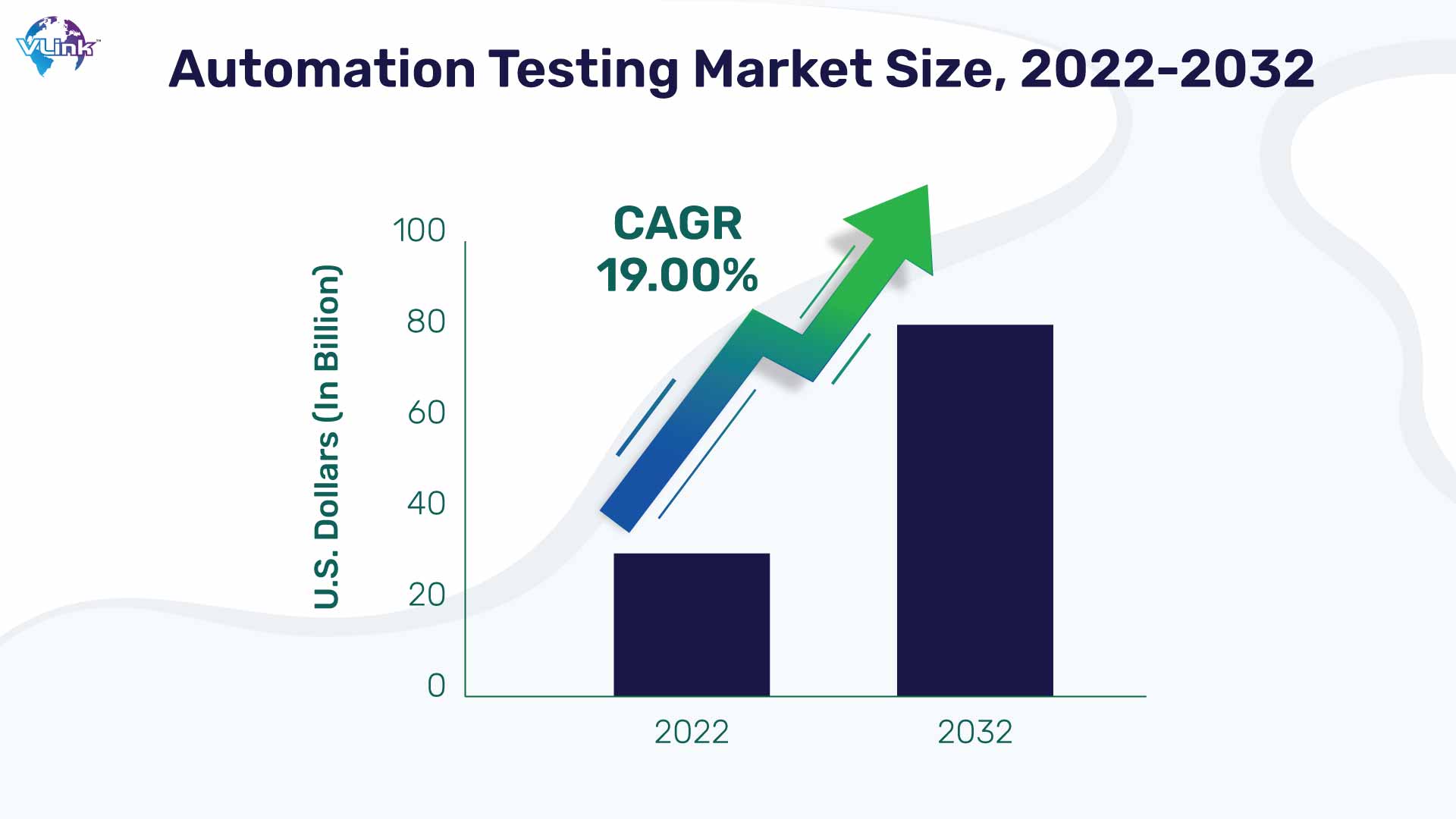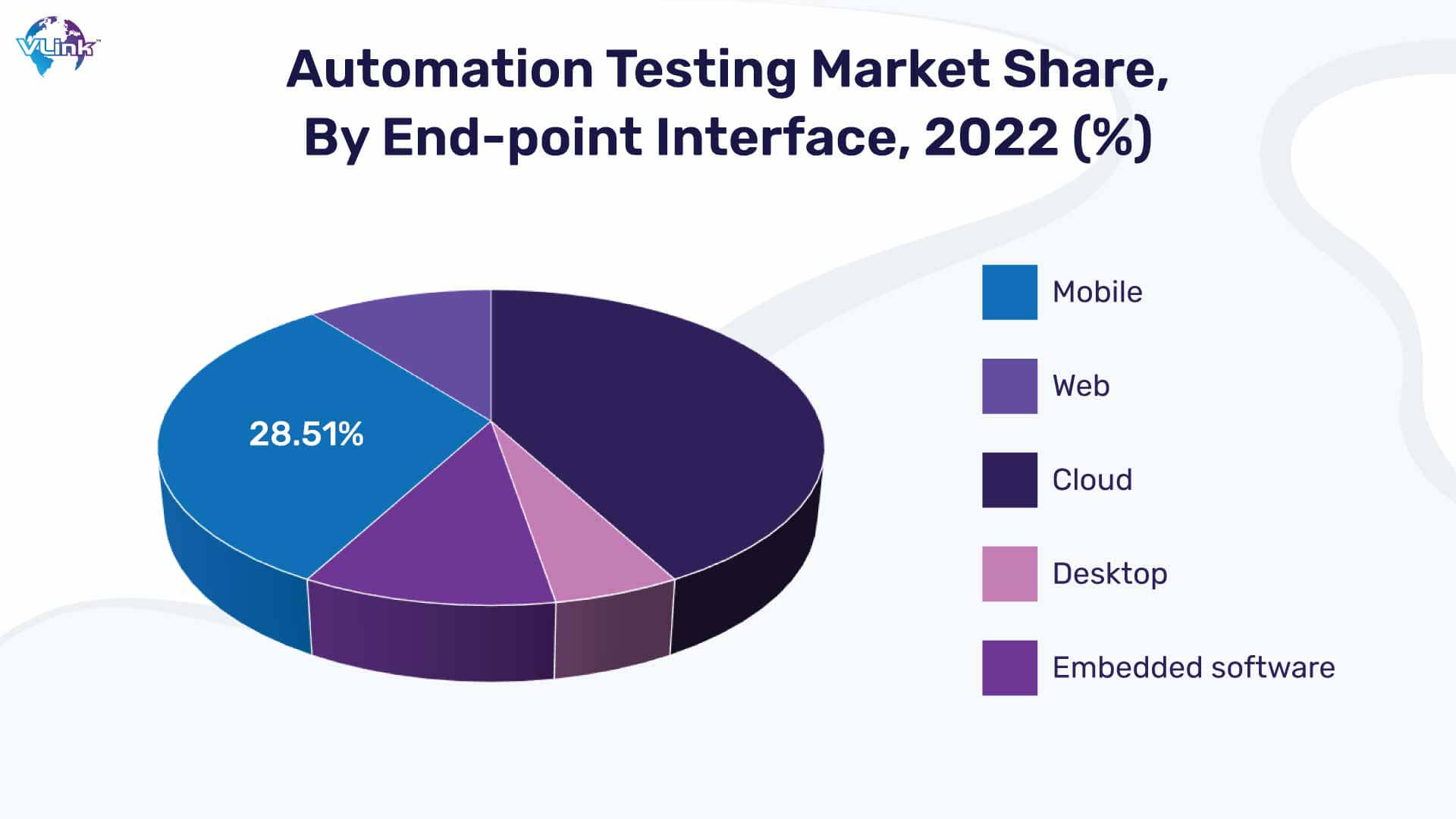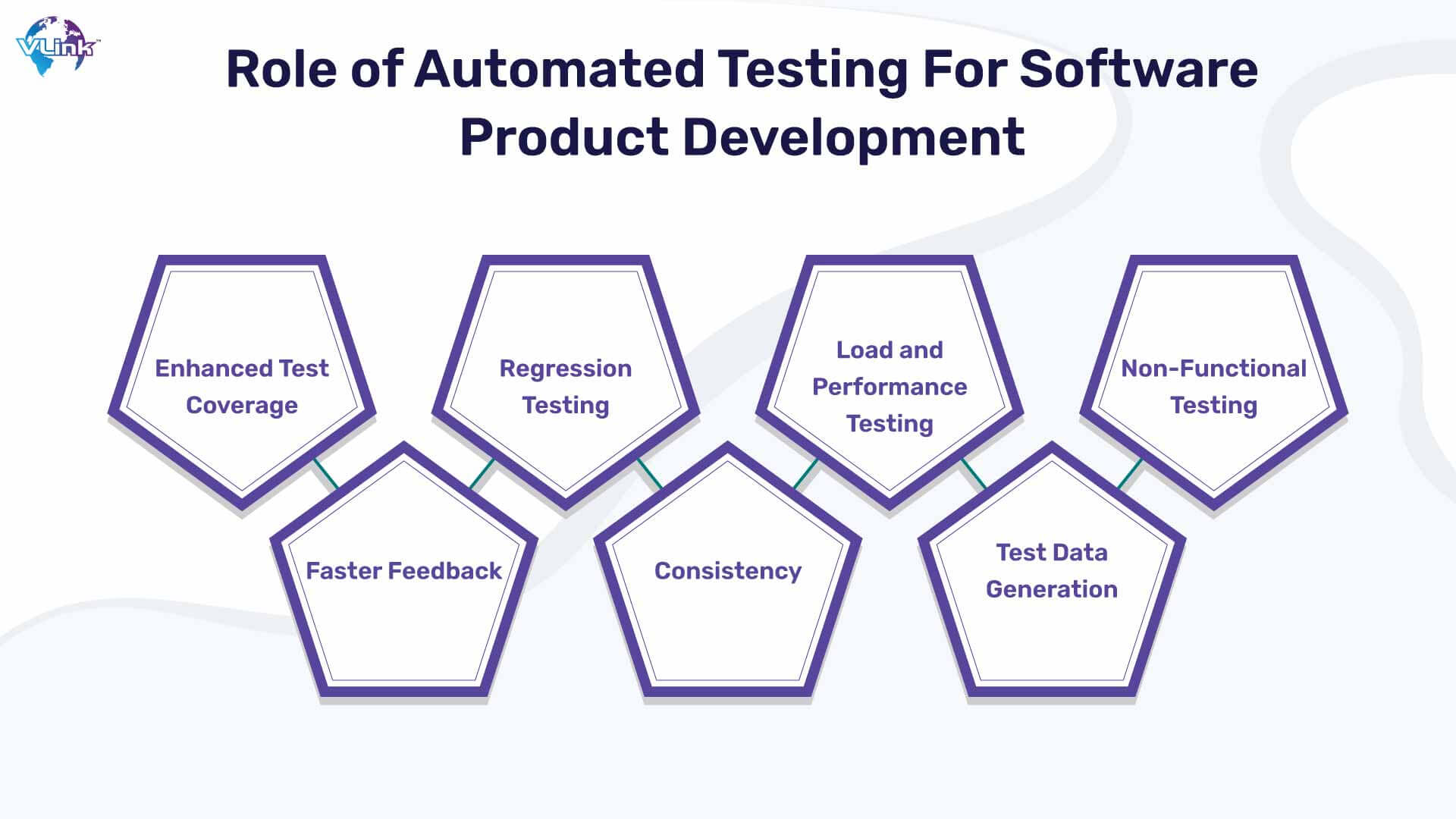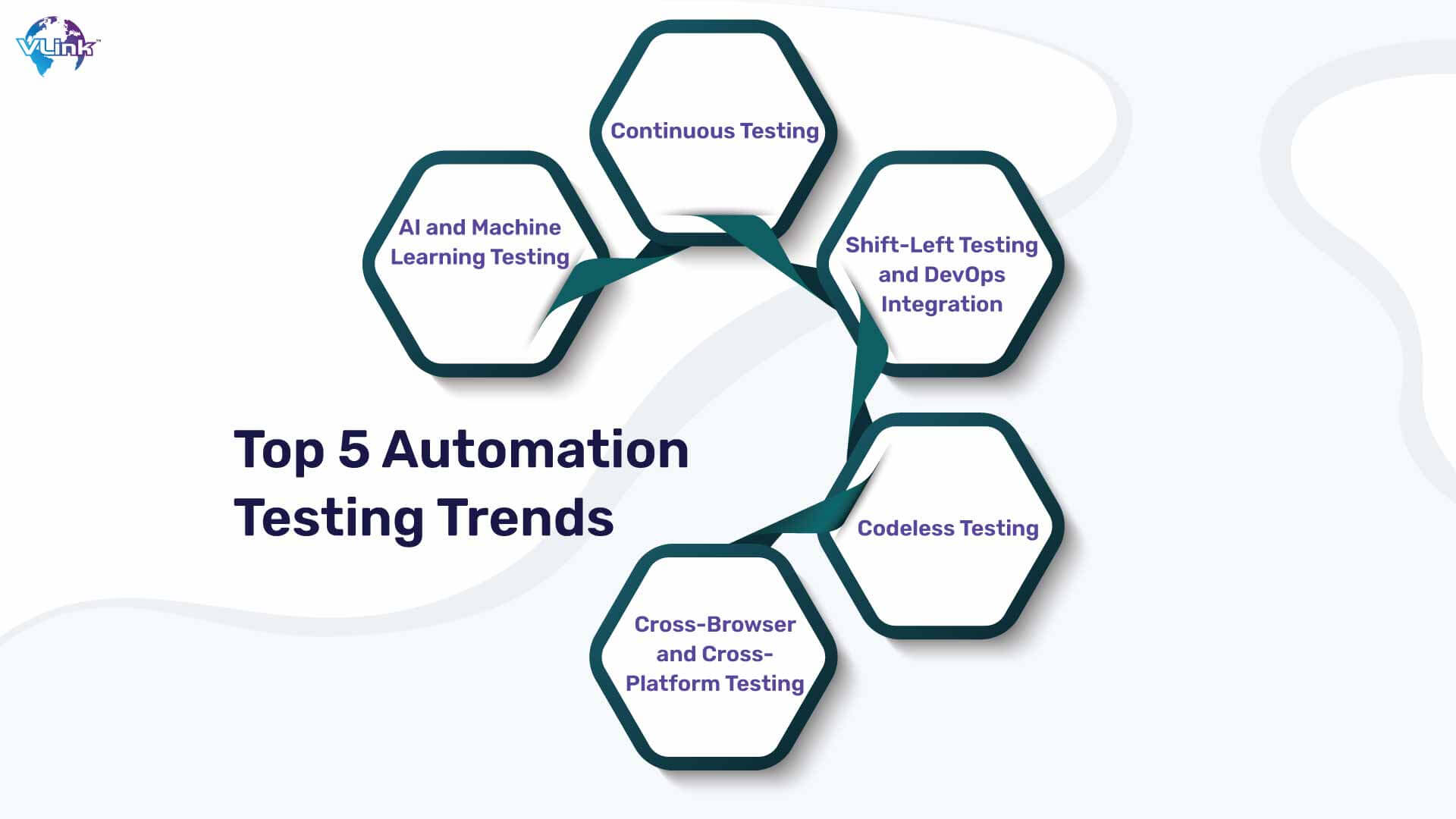Software testing is an essential part of product development. Most companies repeat several tests in the development cycle to ensure the best quality. Global QA expert teams use two main testing approaches: manual and automated.
If you’re experiencing restrictions in your (SDLC) software development life cycle, dependency on manual testing is a big factor. Manual testing is inefficient, time-consuming, and prone to human error. That’s where automated testing comes in!
Test automation increases overall software development efficiency and allows us to develop stronger tools. Even most organizations prefer to use automated testing for software product development. The automation testing market size (2022-2032) is shown in the below figure:

In this blog, we will explore the role of automated testing in the software development process.
Let’s first start with its brief introduction.
What is automated testing in software development?
Automated testing in software development automates the manual process of reviewing and validating a software product. It is implementing an automation tool or software to test cases.
This QA software testing service is well-suited for modern agile and DevOps software projects requiring repeated testing multiple times.
By employing automation, QA experts can spend more time on other valuable tasks, leading to increased app quality, test coverage, and scalability.
Automation testing market share by end-point interface, 2022 (%) is shown in below figure:

Different Types of automated software Testing services.
- Regression Testing
- A Unit Test
- Smoke Test
- API and Integratopn Test
- User Interface & Input/Output Test
- Security Test
- Performance Test
- Acceptance Test
What is the role of automated testing for software product development?

Comprehensive test coverage is possible with automated testing and it’s the importance of software testing services. Fast and repetitive execution of test cases guarantees complete testing of all software elements. This process helps detect early problems, minimizing the expenses of subsequent fault correction.
Automated tests can be executed as per requirements, even after some code alteration. This quick feedback loop allows designers or developers to evaluate and fix problems quickly, supporting continuous interaction and delivery approaches.
As a result, software development services become more agile and responsive to customer feedback.
Software is continually changing with the addition of new features and issue patches. When you start regression testing automatically, it ensures that changes to the codebase don’t introduce new errors or break existing functionality. This feature is essential to maintain software quality over time.
Manual testing comes with several approaches and rigor levels that lead to inappropriate test results. The automated testing process is consistent and dependable as they frequently conduct the same test scenarios. Consistency plays a vital role in creating reliable and predictable software.
Automated software is excellent at simulating high user loads and identifying how well software performs under pressure. It’s essential for finding bottlenecks and improving the software's performance to satisfy user demands.
Automated testing methods cover many situations and edges as these technologies can create test data. It’s useful in complicated software systems where manually developing test data can be time-consuming and bug prone.
Automated tools can be used for non-functional testing, such as security, accessibility, and usability. It ensures that software or product satisfies certain quality criteria and meets accepted industry standards.
What are future trends in automated testing?

Machine learning and AI services will significantly influence the future of automated testing. Thanks to these technologies, testing tools can evaluate huge datasets of test results, see trends, and detect probable flaws or sections of the program that need fixing.
When the application's UI or functionality evolves, AI-powered testing tools will improve at creating test cases, spotting edge cases, and self-healing test scripts.
Continuous testing is an essential pipeline component for continuous integration and delivery (CI/CD). Automation ensures that every code change is rigorously evaluated before being integrated into the main codebase. This trend will further accelerate the development cycle and improve software quality.
The "shift-left" strategy, which emphasizes early and ongoing testing throughout the software development lifecycle, will continue to gain ground. With automated testing easily included in the DevOps pipeline, high-quality software will be continuously delivered while allowing quick feedback and fault identification.
Codeless testing technologies will gain popularity, enabling non-technical stakeholders like business analysts and product managers to write and run tests without writing code. With these tools, developing test cases will have a more user-friendly interface, opening up testing to an organization's wider range of users.
Automated testing will become more essential for assuring cross-browser and cross-platform compatibility as the variety of devices and browsers keeps growing. Testing frameworks and tools will be developed to allow testing across various browsers, operating systems, and appliances.
Start Automated Testing for Your Project with VLink!
Automation testing reduces regression testing time and accelerates product releases, leading to substantial expense efficiencies over the long term. VLink, a QA automation testing service company, introduces test automation infrastructure as per your software specifics and quickly develops easily maintainable test suites.
Our software automation testing services plan prioritizes testing, rectifying, and launching new features quickly for businesses. With cloud DevOps automation services, we ensure a continuous delivery pipeline for faster market speed with lower risk & cost and active participation of stakeholders.
Here are several reasons why you should choose VLink for software automation testing services:
- Ease of Test Creation
- Automate Your CI/CD
- Cost Savings
- Better Test Coverage
- Broad Language Support
- Faster Debugging









 Shivisha Patel
Shivisha Patel
















